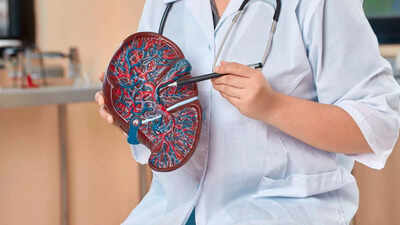Liver disease remains one of the most pressing public health challenges across the world. In the United States alone, an estimated 4.5 million adults are affected, making it the ninth leading cause of death. Two of the most significant stages of chronic liver disease are fibrosis and cirrhosis. While both involve scarring of the liver, they represent very different stages of progression.Fibrosis marks the early, potentially reversible phase, while cirrhosis is the final, irreversible stage of liver damage. Understanding the differences between these conditions is crucial for early intervention and long-term liver health.
Understanding liver fibrosis and cirrhosis
Liver fibrosis occurs when healthy liver tissue becomes scarred due to ongoing injury or inflammation. The liver, being a regenerative organ, attempts to repair itself after damage. However, repeated injury causes excessive collagen and protein buildup, leading to stiff, fibrotic tissue.In the early stages, fibrosis does not significantly impair liver function. However, if the underlying cause such as alcohol misuse, viral hepatitis, or fatty liver disease, continues unchecked, fibrosis can progress to cirrhosis.Cirrhosis is the advanced stage of liver scarring, where normal liver architecture is permanently destroyed. The scar tissue replaces healthy liver cells, reducing the liver’s ability to filter toxins, produce essential proteins, and support digestion.At this point, the condition is irreversible, although treatment can slow its progression and manage symptoms. Cirrhosis also dramatically increases the risk of liver failure and liver cancer.
Liver fibrosis and cirrhosis symptoms: How they differ
Liver fibrosis In most cases, liver fibrosis develops silently, without noticeable symptoms. People may live for years with mild or moderate fibrosis without knowing it. It’s often discovered incidentally during blood tests or imaging for unrelated conditions.As fibrosis worsens, some individuals might experience mild fatigue, loss of appetite, or discomfort in the upper right abdomen. However, these symptoms are nonspecific and often mistaken for other minor ailments.Liver cirrhosisCirrhosis symptoms tend to appear once liver function becomes significantly compromised. Early-stage cirrhosis may still go unnoticed, but as the disease advances, symptoms become more apparent and debilitating. These may include:
- Persistent fatigue and weakness
- Loss of appetite and unintended weight loss
- Nausea and vomiting
- Itchy skin and easy bruising
- Jaundice (yellowing of the skin and eyes)
- Dark urine and pale stools
- Swelling in the legs, ankles, or abdomen (ascites)
- Pain in the upper right abdomen
- Muscle cramps and wasting
- Spider-like blood vessels under the skin
- Confusion or difficulty concentrating (due to toxin buildup in the brain)
Causes of fibrosis and cirrhosis
Both fibrosis and cirrhosis share the same underlying causes: chronic damage and inflammation to the liver. The most common causes include:Hepatitis B and C infections are leading causes of chronic liver inflammation worldwide. Over time, they can cause progressive scarring that develops into cirrhosis if untreated.
- Alcohol-related liver disease
Long-term excessive alcohol consumption leads to continuous liver inflammation, fat accumulation, and eventual scarring.
- Non-alcoholic fatty liver disease (NAFLD)
NAFLD, commonly linked to obesity, diabetes, and high cholesterol, can lead to fibrosis and cirrhosis even in non-drinkers.In this condition, the immune system mistakenly attacks liver cells, causing chronic inflammation and damage.Diseases like primary biliary cholangitis and primary sclerosing cholangitis disrupt bile flow, damaging liver tissue over time.Inherited conditions such as Wilson’s disease and haemochromatosis can cause copper or iron buildup in the liver, triggering fibrosis and cirrhosis.
Risk factors
Risk factors that increase the likelihood of developing liver fibrosis or cirrhosis include:
- Chronic hepatitis B or C infection
- Heavy or prolonged alcohol use
- Obesity and insulin resistance
- Poor diet and lack of physical activity
- Family history of liver disease
- Autoimmune or metabolic disorders
People exposed to multiple risk factors are at a significantly higher risk of progressive liver damage.
Liver fibrosis and cirrhosis complications
The primary complication of fibrosis is progression to cirrhosis if the root cause is not addressed.Cirrhosis can lead to severe, potentially fatal complications, such as:
- Portal Hypertension – increased pressure in the portal vein
- Ascites – fluid buildup in the abdomen
- Varices – enlarged veins that may rupture and cause internal bleeding
- Hepatic Encephalopathy – toxin accumulation leading to confusion and cognitive decline
- Liver Failure – when the liver can no longer perform vital functions
- Liver Cancer (Hepatocellular Carcinoma) – a major risk in advanced cirrhosis
When to seek medical help
Because both fibrosis and early cirrhosis can be silent, it’s crucial to pay attention to warning signs such as:
- Persistent fatigue and weakness
- Loss of appetite or unexplained weight loss
- Ongoing nausea or vomiting
- Upper right abdominal pain
- Jaundice or dark urine
- Itchy skin and pale stools
Anyone experiencing these symptoms should consult a doctor immediately for evaluation.
Prevention tips
Preventing fibrosis and cirrhosis largely revolves around protecting the liver from chronic damage. Steps include:
- Avoiding or limiting alcohol
- Eating a balanced diet with plenty of fruit, vegetables, and lean proteins
- Maintaining a healthy body weight
- Exercising regularly
- Avoiding sharing needles or personal hygiene tools
- Getting vaccinated against hepatitis B
- Using condoms to prevent hepatitis infection
- Choosing safe, regulated tattoo and piercing establishments
- Taking medications exactly as prescribed and avoiding unnecessary drugs
Disclaimer: This article is for informational and educational purposes only. It is not intended to replace professional medical advice, diagnosis, or treatment. If you suspect liver disease or experience any symptoms mentioned, please consult a qualified healthcare provider for personalised medical guidance.Also Read | Red wine isn’t heart-healthy for everyone: Harvard-trained liver expert reveals how it can silently damage your liver
